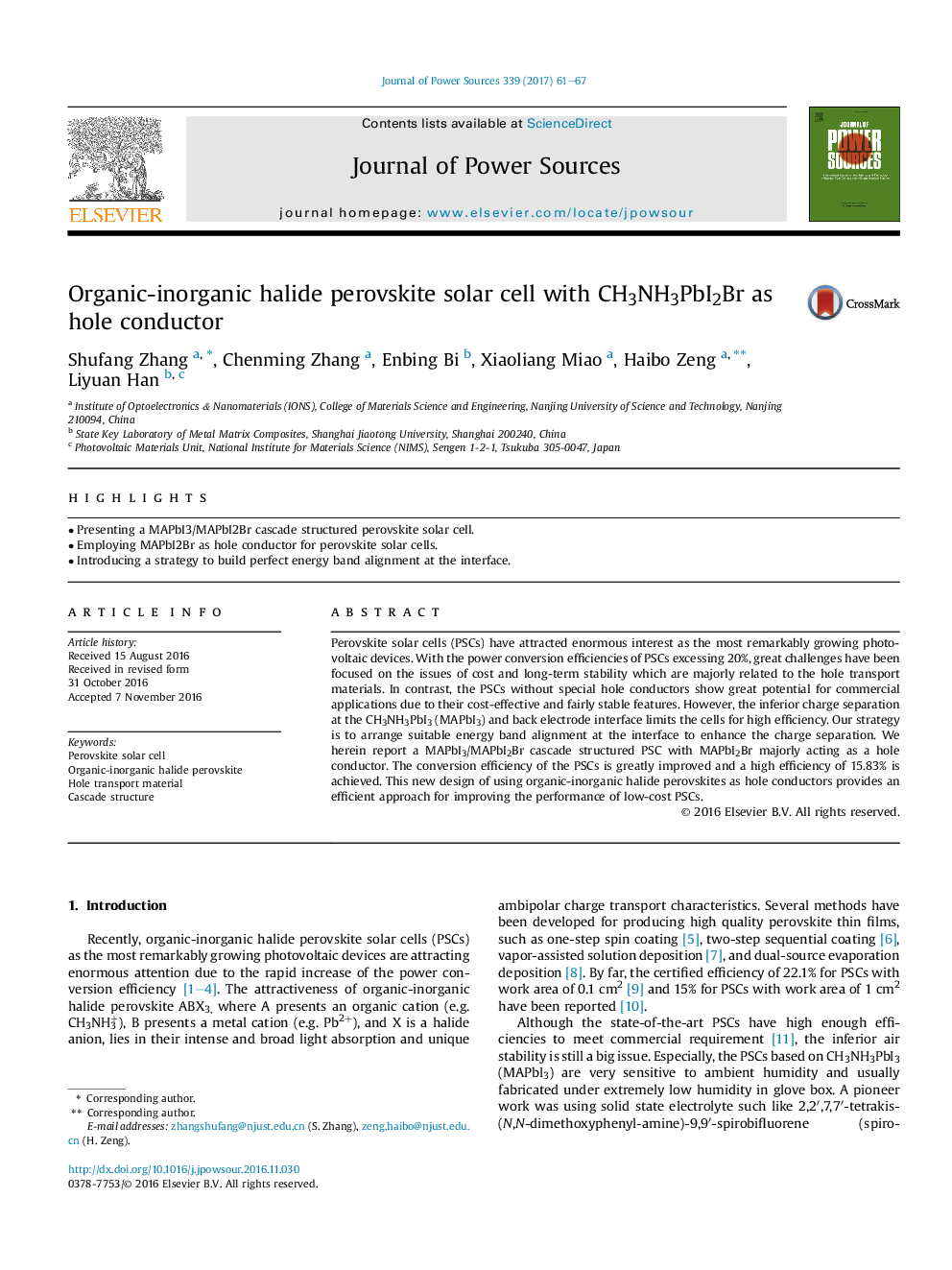| Article ID | Journal | Published Year | Pages | File Type |
|---|---|---|---|---|
| 5149916 | Journal of Power Sources | 2017 | 7 Pages |
Abstract
Perovskite solar cells (PSCs) have attracted enormous interest as the most remarkably growing photovoltaic devices. With the power conversion efficiencies of PSCs excessing 20%, great challenges have been focused on the issues of cost and long-term stability which are majorly related to the hole transport materials. In contrast, the PSCs without special hole conductors show great potential for commercial applications due to their cost-effective and fairly stable features. However, the inferior charge separation at the CH3NH3PbI3 (MAPbI3) and back electrode interface limits the cells for high efficiency. Our strategy is to arrange suitable energy band alignment at the interface to enhance the charge separation. We herein report a MAPbI3/MAPbI2Br cascade structured PSC with MAPbI2Br majorly acting as a hole conductor. The conversion efficiency of the PSCs is greatly improved and a high efficiency of 15.83% is achieved. This new design of using organic-inorganic halide perovskites as hole conductors provides an efficient approach for improving the performance of low-cost PSCs.
Related Topics
Physical Sciences and Engineering
Chemistry
Electrochemistry
Authors
Shufang Zhang, Chenming Zhang, Enbing Bi, Xiaoliang Miao, Haibo Zeng, Liyuan Han,
